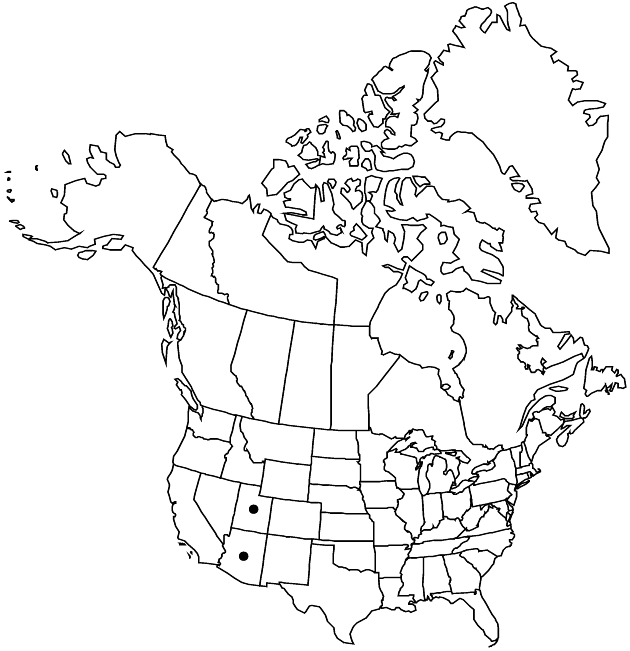Gaillardia parryi
Bull. Torrey Bot. Club 27: 512. 1897.
Endemic
Basionym: Gaillardia acaulis A. Gray Proc. Amer. Acad. Arts 10: 73. 1874,
Perennials, 10–35 cm. Leaves mostly basal, sometimes to midstems; petiolar bases 3–5+ cm; blades elliptic-obovate to ± spatulate, 3–5+ cm × 5–25 mm, margins weakly lobed or entire, faces closely puberulent. Peduncles 10–30 cm. Phyllaries 22–26+, lance-attenuate, 9–12 mm, villous with jointed hairs. Receptacular setae 2–4 mm. Ray-florets 8–14; corollas yellow, 14–17+ mm. Disc-florets 50–100+; corollas yellow, tubes 1–1.2 mm, throats cylindric, 4–5.5 mm, lobes ovate, 0.7–1.3 mm, jointed hairs 0.3+ mm. Cypselae ± obpyramidal, 1–2 mm, hairs 1+ mm, inserted at bases and on angles and faces; pappi of 10 ovate to lanceolate, aristate scales 5–6.5+ mm (scarious bases 3–4.5 × 1–1.2 mm). 2n = 68.
Phenology: Flowering May–Jun(–Sep).
Habitat: Clays or sandy soils, often disturbed places, with sagebrush, pinyons, or yellow pines
Elevation: 1200–2000 m
Discussion
Selected References
None.
Lower Taxa
None.
... more about "Gaillardia parryi"
introrse +
connate +
herbaceous +
scarious +
absent +
hirsute +
papillate +
continuous +
decurrent +
elliptic-obovate;more or less spatulate +
winged;ribbed;winged;ribbed +
1;15 +
stigmatic +
35;150 +
absent +
zygomorphic +
yellow +
monomorphic +
dimorphic +
hairy +
obpyramidal +
1mm;2mm +
staminate +
staminate +
straight +
puberulent +
scabrellous +
distinct +
proximal +
1;5 +
bisexual +
dispersed +
corymbiform +
singly +
jointed +
singly +
indeterminate +
surrounding +
hemispheric;nearly rotate +
alternate +
basal +
ovate +
? (?) +
2-carpellate +
inferior +
attached +
anatropous +
persistent +
falling +
tough +
thick +
absent +
connate +
persistent +
distinct +
falling +
villous +
unequal +
Bull. Torrey Bot. Club +
1897 +
absent +
epaleate +
convex;hemispheric +
fibrous +
absent +
thickened +
scarious +
exalbuminous +
modifed +
absent +
1;2 +
Endemic +
alternate +
branched +
erect +
2-branched +
papillate +
Gaillardia parryi +
Gaillardia +
species +
cylindric +
much shorter than ampliate +
equaling +
perennial +
subshrub +
